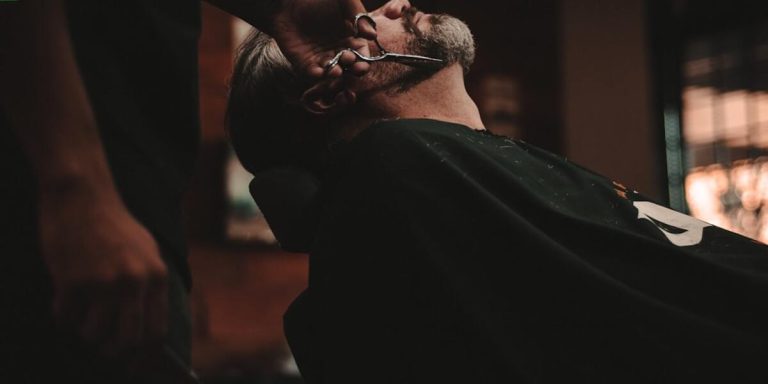Hair Transplant Regrowth Timeline: A Comprehensive Overview
Understanding the hair transplant regrowth timeline is crucial for anyone planning to undergo this life-changing procedure. It helps set realistic expectations and assists in effectively managing the recovery process. With each phase of the timeline characterized by different changes, having a clear insight can provide reassurance during what could be an anxious time.
The stages of hair growth after a transplant aren’t immediate; it’s typically spread over several months where various developments occur sequentially. The individual’s overall health, adherence to post-procedure care instructions, and intrinsic genetic predisposition significantly affect this timeline as well. In essence, patience coupled with good aftercare are key elements in successfully navigating through your unique hair transplant regrowth journey.
Did you know?
Did you know? After a hair transplant procedure, it takes approximately 3 to 4 months for the newly transplanted hairs to start growing and they continue to grow at a normal rate thereafter.
Understanding the Hair Transplant Regrowth Timeline
Understanding the timeline of hair transplant regrowth is essential for anyone considering this life-changing procedure. In 2023, medical advances and cutting-edge techniques have significantly enhanced the process of hair transplants, making it an increasingly popular solution to tackle hair loss.
The first stage post-transplant involves shedding of transplanted hairs – a completely normal part of the process known as “shock loss”. This occurs within two to six weeks following surgery. While it may be alarming initially, rest assured that this signals your scalp preparing for new growth.
As we enter months three to four after surgery, you will notice gentle sprouting on your scalp. Although these initial strands might appear thin or sparse at inception, they serve as indications that follicles are adjusting in their new environment and starting their lifecycle anew efficiently responding towards steady and healthy growth phases.
Now comes what many refer to as ‘the exciting phase’. By month six to nine post-surgery patients often witness noticeable difference with denser and thicker regrowth being more visible than before. The journey from bare patches transitioning into areas filled with sturdy natural-looking hair can feel exhilarating!
Gradually entering year one since undergone transplant everything intuitively falls into place fostering credibility over your decision made back then regarding treatment suitability . Hair continues developing momentum through its thickness consistency seeming indistinguishable from non-transplanted regions capturing full essence thereby reflecting successful completion along dictated timelines suggested by expert surgeons .
Key Phases of Post-Transplant Hair Growth
In phase one: The first two weeks post-surgery is when healing begins; your scalp may feel tender and you might require pain medications for a few days. You’ll also need to wear bandages over your scalp for at least a day or two.
Phase two typically occurs from 2-3 weeks post-transplant. During this time shedding of transplanted hairs can be expected, which might cause alarm but is completely normal! This phenomenon known as ‘shock loss’, paves way for new growth.
From 4th to 6th months (phase four), nascence becomes noticeable as tiny sprouts beginning to emerge from beneath the previously barren landscape providing hope & joy!
Come seventh-month onwards until tenth (phase five), it’s just bloom all around! Hair grows thicker progressively week-after-week reaching close-to-original thickness by end of year!
Factors Affecting the Speed of Transplanted Hair Regrowth
There are several factors that can influence the speed of hair transplant regrowth and it’s important to consider these while mapping out your own personal journey with hair restoration.
1. **Overall Health**: A person’s overall physical health plays a significant role in how quickly their transplanted follicles recover and start producing new hairs. If you’re generally healthy, eat well, exercise regularly, don’t smoke or consume alcohol excessively; chances are high that your “hair transplant regrowth timeline” will be on the faster end.
2. **Graft Quality**: The quality of grafts used during surgery is another key determinant for quick and successful growth after a hair transplantation process. High-quality grafts have multiple strands of live root cells which grow quicker than single-stranded counterparts when implanted in recipient sites.
3. **Post-operative Care:** How meticulously one follows post-surgery instructions like medication routines, avoiding exposure to sun & dust etc., also impacts recovery periods dramatically.
4 .**Surgeon Skills & Techniques Used:** Highly skilled surgeons using advanced techniques tend to produce better results with minimized trauma to scalp tissues resulting in faster healing times.
A few individuals may suffer from underlying conditions affecting normal cycle of natural hair growth like Alopecia Areata or Telogen Effluvium which might slow down progress despite an otherwise successful procedure.
What to Expect During Each Stage of Hair Transplant Maturation
The journey of hair transplant regrowth is indeed an intriguing one. It doesn’t follow the typical rapid bounce-back trajectory we often associate with body healing post-surgery. Instead, it’s a gradual process that mirrors the natural cycle of hair growth and takes place in various stages over time.
During the initial weeks following your hair transplant surgery, you might notice some shedding or thinning out of transplanted hairs – but don’t despair! This temporary phase known as “shock loss” is entirely normal and occurs due to trauma from surgery causing a shift from growth to resting phase for these new strands.
As months pass by after this shock period (usually around 3-4), you’ll begin noticing small, sprouting follicles at your transplant sites. They may not appear thick or dense immediately; however, patience here will pay off substantially once we move into later phases.
This mid-phase marks another essential stage where proactive care comes into play even more significantly than before: maintaining scalp health via targeted treatments can fuel robust regrowth during these critical periods – so make sure not to slouch on those topical applications!
Initial Shedding: The First Step in the Journey to Fuller Hair
The journey of hair regrowth following a transplant can be likened to a seed sprouting—it goes through various stages before fully maturing. Initial shedding is the first step, and it’s vital in setting the stage for new follicles to grow.
During this initial time period, practically all newly grafted hairs will fall out due to what we call ‘shock loss.’ Shock loss happens when these grafts go into resting or telogen phase as they respond to their relocation from one part of your scalp (usually back or side) towards balding areas up top.
Though unsettling at first sight, remember: it’s not just an inevitable event; it helps pave way for thinner but healthier strands—the kind mother nature intended!
But even then patience plays key role. The emergence doesn’t mean full restoration right away; slow progress ought be appreciated since success comes those who wait—they say there’s no shortcut achieving great things!
Celebrating Milestones: Tracking Progress Beyond 6 Months
When you embark on a hair transplant journey, understanding the “hair transplant regrowth timeline” can be both intriguing and reassuring. The real magic starts to happen beyond 6 months post-procedure, so it’s time for some celebration as we walk along this fascinating path.
As your calendar turns over six months after surgery, the initial signs of growth will start blossoming – these are tiny baby hairs making their introduction. Their texture would be somewhat finer than normal hair but remember, every new sprout is essentially a sign that your scalp is healing satisfactorily from the procedure.
By seven to eight months down the line in your hair regrowth venture, you’ll likely find yourself admiring significant changes. This period typically witnesses an impressive surge in density and volume — expect half or more of your transplanted grafts growing steadily now!
Circling towards nine-month mark? Well then brace yourself for even thicker coverage! On top of all those continuing growth spurts appearing month-by-month since operation day one: by this point approximately 60-70% transplantation should have taken place successfully providing noticeable results.
Maximizing Results Through Proper Aftercare and Treatment Strategies
When it comes to hair transplant regrowth, having a proper regimen of aftercare and treatment strategies can play an instrumental role in optimizing results. Keeping your scalp clean, adhering strictly to medication routines prescribed by your physician and avoiding certain activities during the recovery period are among key actions that can positively impact recovery stages.
Hair transplant is not just about the surgery but equal importance should be given to post-operative care for achieving maximum regrowth. For instance, refraining from touching or rubbing the surgical area reduces risk of infection while ensuring direct sun exposure is minimized aids faster healing process.
Lastly on medication adherence; consume duly-prescribed antibiotics and painkillers exactly as directed by your doctor which help prevent potential complications such as swelling or folliculitis – inflammation affecting hair follicles. Moreover keeping stress levels low through relaxation exercises like meditation could enhance healthier growth rate.
Anticipating the results of a hair transplantation procedure requires patience. Full results usually manifest within six to twelve months, varying based on each individual’s bodily responses to the treatment. At Soulphany, we equip you with the necessary knowledge to make informed decisions about maintaining optimal health pre- and post-operation. This journey leads to increased self-confidence and an improved quality of life.
Role of Scalp Care in Promoting Healthy Regrowth Post-Transplant
One of the first aspects to consider is maintaining cleanliness. Keeping your scalp clean is fundamental as it prevents infections that may hinder hair growth or harm newly implanted follicles. Using mild shampoos advised by surgeons can help prevent dryness while also reducing chances of infection.
Hydration comes next on our list. Maintaining proper hydration levels bolsters overall health which extends benefits towards graft survival too, facilitating healthier and quicker growth.
Attention must be given to diet as well because food plays no minor role when it’s about supporting new growths following transplants. Protein-rich diets are recommended since proteins foster cell repair processes, including those within follicular cells contributing significantly toward hair development.
Next up is avoiding physical stressors like scratching or rubbing the area where surgery was performed as these actions might dislodge fresh implants affecting their ability to root securely thereby delaying progress along the ‘hair transplant regrowth timeline’.
Equally important yet often overlooked point relates to limiting exposure under sun’s harmful rays during early stages with critical importance assigned within initial three months after procedure protecting new follicle additions from potential damage they could sustain through harsh sunlight exposure.
Incorporating Treatments and Supplements to Support New Growth
Hair transplant regrowth timeline differs for every individual, nonetheless incorporating treatments and supplements in your regimen can speed up the process and optimize results. When it comes to hair treatment aftercare strategies, one size doesn’t fit all; this may depend on various factors like age, health status and genetics.
The first month post-transplant is critical as new follicles are just adapting to their environment. It’s advisable at this stage to avoid harsh chemicals or strenuous activities that might cause sweating leading potentially damaging effects on new growth areas.
At around 3-6 months mark, you’ll begin noticing changes in texture and volume of your transplanted hair. This becomes a good time introduce nourishing hair masks into your routine which help fortify roots promoting healthier strands.
Conclusion
In wrapping up, knowing the hair transplant regrowth timeline can significantly help you set your expectations and maintain patience throughout the process. Remember, good things take time and so does achieving a full head of hair post-transplantation!
Don’t stop here; there is an abundance of information at your disposal on our website to get savvy about all facets of Hair Regrowth. Knowledge empowers us – it helps dispel unnecessary fears while preparing us for what truly lies ahead. Feel free to browse around for more invaluable advice, tips, tricks, and expert insights that guide you on this journey back towards luscious locks!







